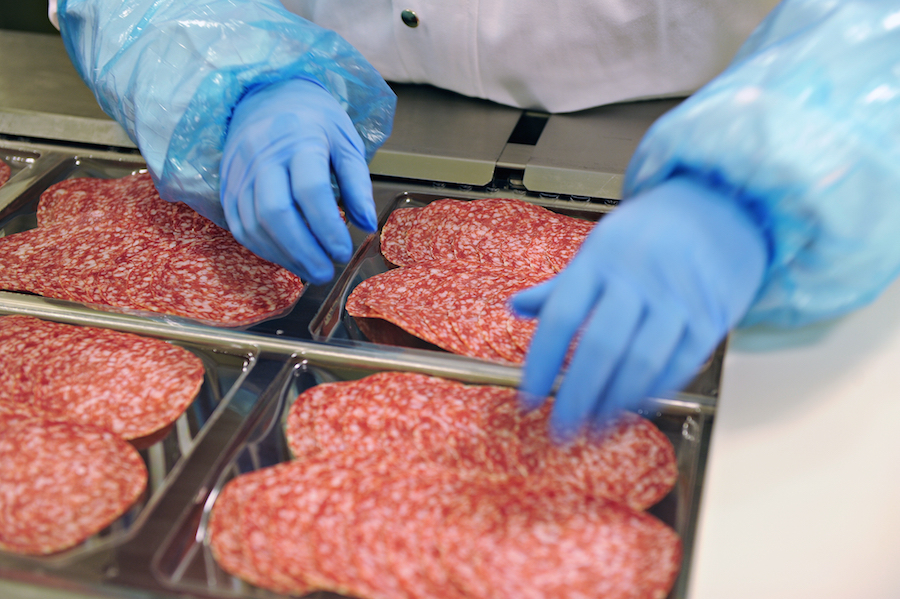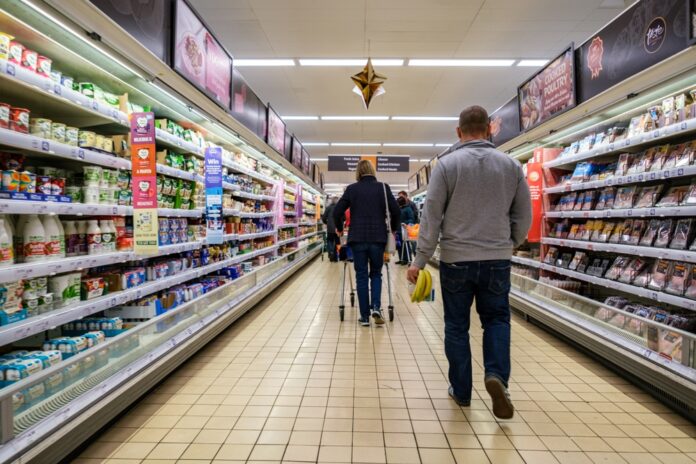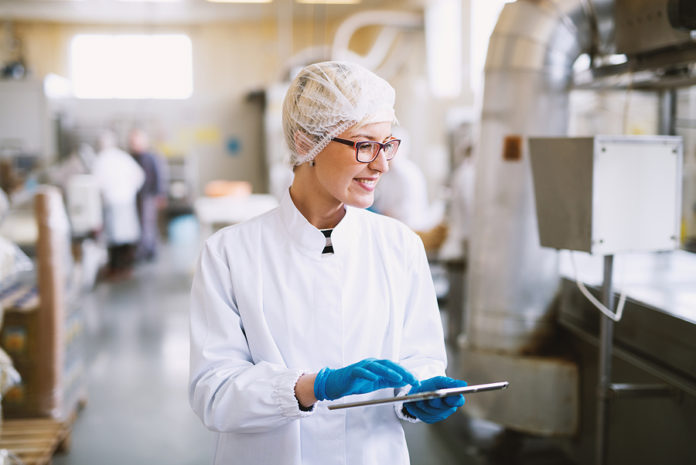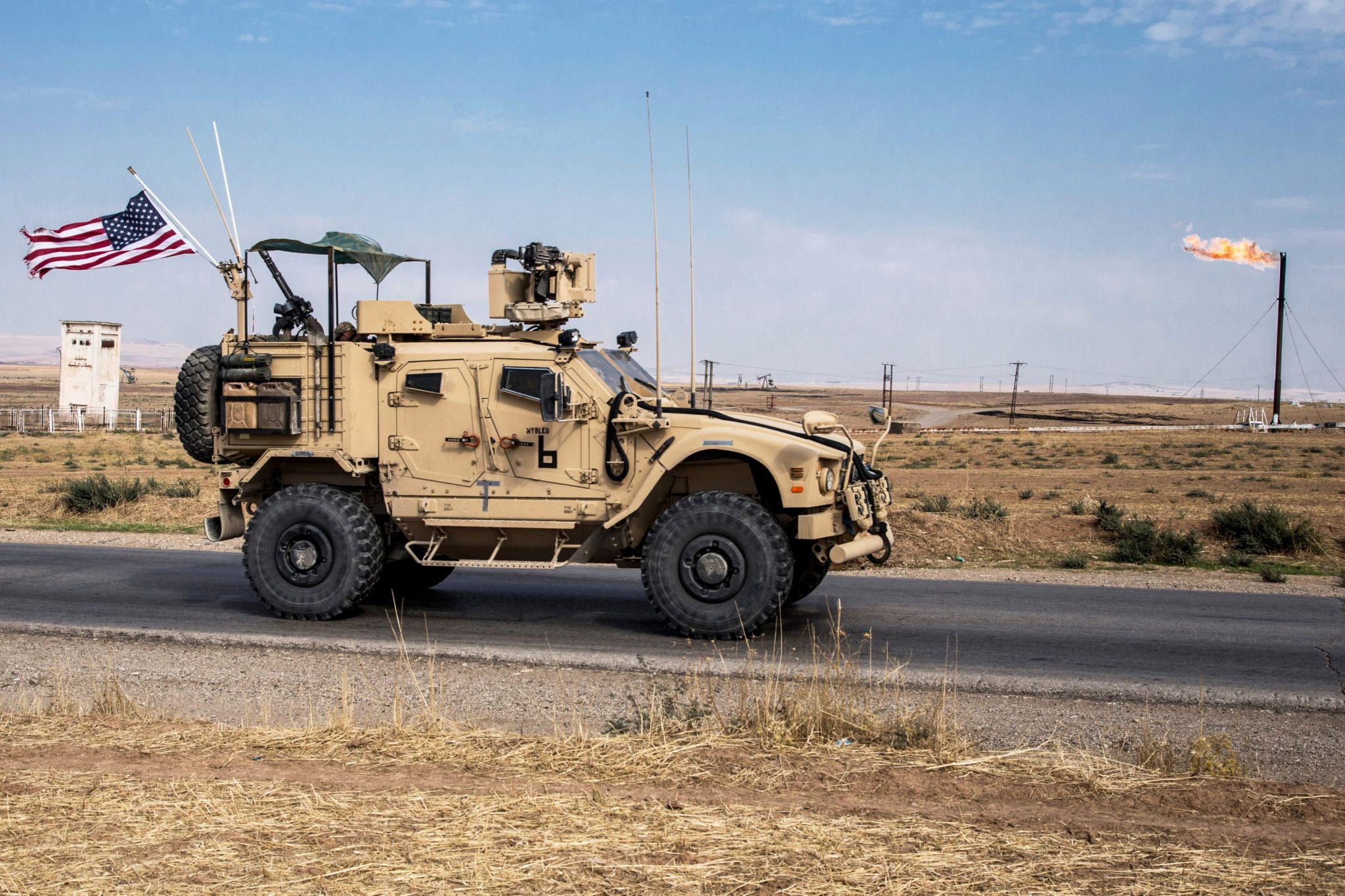

Food safety is central to how brands think about trust, resilience, and long-term performance — especially in meat and poultry, where the risks of getting it wrong are very real. For more than two decades, the Meat Institute has been one of the industry’s anchors in that evolution, bringing processors and equipment manufacturers together to tackle Listeria, refine design principles, and share what works instead of treating food safety as a competitive advantage.
As Senior Director of Regulatory Policy, Casey Gallimore sits at the intersection of that technical and cultural shift. She spends her time working with companies on everything from Listeria control and equipment design to executive toolkits and training programs that translate policy into daily practice. For her, true food safety excellence isn’t about a slogan or a separate “culture” — it’s about design, sanitation, maintenance, and leadership all pulling in the same direction, every day.
In this conversation from EATS, Casey traces how the industry moved from “run it hard and fast” to designing for cleanability, why Listeria remains a constant battle rather than a solved problem, how data and cross-functional collaboration are opening up a new systems view of risk, and what mindset executives need to bring home from EATS if they want to build truly resilient food safety programs.
Q. Food safety design and sanitation are often seen as technical disciplines. How is that perception changing as more companies recognize their impact on brand trust and business performance?
Casey Gallimore: It somewhat goes back historically. The Meat Institute has a long history of collaborating on food safety. If you were to mark an official beginning of that, it would be 2001, when our board voted that food safety would be not competitive in the meat industry. That was a pivotal point.
We really dove very deep into control for Listeria after several very high-profile outbreaks associated with deli products. It was driven out of necessity in the beginning, but it enabled us to have really open information-sharing between packers and processors. At that time, they realized how crucial sanitation and equipment design were in preventing Listeria outbreaks.
That’s when they started drafting what we now call the food safety equipment design principles. Over the years, the scope expanded beyond just sanitary or hygienic design to really encompass all of food safety — foreign material, chemical hazards, all the different types of hazards.
It started as something very specific to hygienic design: packers and processors saying, “We need to expect more from our equipment manufacturers.” That drove a culture change in equipment manufacturers, who started to see the benefit that if they complied with these principles, they were more likely to get a sale.
Now we’ve seen another evolution. The really good equipment manufacturers have taken it so much into their own culture that they’re selling based on sanitary design — which would not have been the case 20 years ago. And we’ve seen those principles move beyond ready-to-eat processes into slaughter and first processing. It’s been great to see that shift.
Q. Are you seeing leadership teams treat food safety as a growth and resilience strategy rather than just a compliance cost?
CG: I actually don’t love the term “food safety culture,” because I think it’s gotten morphed into a buzzword. What it really means is caring enough about food safety that it’s just a normal, integral part of doing business. It’s not an add-on, and it’s not, “Shoot, here comes the food safety person walking by.”
In companies that truly treat food safety as a growth and resilience strategy, everyone thinks about it and plans for it in their everyday work. Maintenance thinks about it. Operations thinks about it. They do that because they know they have to, and because they’re held accountable. It’s everyone’s job, not “go appease the food safety professional.” And that mindset has to start at the top in every company that really has a good culture.
Q. What does “optimal design” really mean for today’s manufacturers — and how does it translate to efficiency and long-term ROI?
CG: Historically, we had one goal: to produce as much as we could, as quickly as we could. As an industry, we kind of had a “run until it breaks” mentality. That worked for a while.
But as standards for food safety grew, as we were able to connect outbreaks more, and as it became more apparent how integral sanitation and food safety are, expectations changed for packers and processors. It doesn’t matter how much product you produce or how fast you produce it if you have to recall it. Whether we like it or not, that drove the initial change.
Now we’re seeing people understand that optimal design is about all the pieces of the equation working together. It’s great if you can run hard and fast and make a lot of product, but if that product has to get put on hold, it doesn’t really matter. We’re realizing that a lot of the things we’ve done for food safety have additional benefits.
A lot of equipment runs better when you’re cleaning it and it’s not getting buildup. If it’s easier to clean, your sanitation crew isn’t beating up the equipment as much as they used to. Those things end up fitting together more nicely than people might have originally imagined — making things more efficient both during sanitation and during production.
Q. Are you seeing stronger collaboration between OEMs, sanitation teams, and plant operations earlier in the equipment design process?
CG: Yes, I’m seeing it happen earlier — and not just inside companies. It’s happening upstream with equipment manufacturers. We’re seeing really great conversations where a packer or processor says, “I have this problem,” and the equipment manufacturer says, “How can we solve it?”
Inside companies, purchasing teams now often have a checkbox: did the food safety group sign off on this? In a previous role of mine, we had a project where food safety wasn’t involved until we were very close to the end, and we learned a hard lesson. After that, people realized food safety isn’t just the person who says no; they can be a partner in figuring out how to do things right the first time.
Q. With automation and robotics becoming more common, how are manufacturers balancing advanced technology with the realities of cleanability and maintenance?
CG: Automation and robotics create another level you have to deal with in maintenance and sanitation, but I don’t think it’s as problematic as people feared. We also have to remember there are automation and robotics solutions for sanitation itself — we’re seeing more automated sanitation solutions, even if not as much robotics there yet.
For as many new problems as we see, we see just as many, if not more, new solutions. And robotics and automation can sometimes do things much more precisely than a human can, which in itself can mean less mess and less sanitation required.
Q. Are new design philosophies emerging to make automated environments easier to sanitize and inspect?
CG: The bigger mindset shift in the last five to ten years has been around how we design equipment. We used to think of equipment as super-sensitive — something we needed to protect from sanitation so it wouldn’t get ruined. Now equipment manufacturers have really embraced the fact that we have to clean the plant, and the tools we’re going to use are water and chemicals that aren’t always gentle.
So they’re designing equipment to withstand the environment it’s going to be in, both operationally and during sanitation. A great example: at a show like EATS, the equipment looks really cool, but we used to be so focused on making it sleek and pretty that we didn’t focus on whether we could clean it.
Now you’re seeing a lot of equipment that maybe isn’t as “pretty” as it would have been five years ago — fewer cosmetic panels, more open designs so it’s easier to clean the inside. I really enjoy seeing equipment manufacturers embrace the idea that, yes, we’re going to clean it, so let’s build it to withstand cleaning, not just daily operation.
Q. What does a true food safety culture look like — one that reaches engineering, maintenance, and even production scheduling?
CG: If I walk into a facility, I should be able to know what their GMP program is without looking at it on paper. It should be obvious what their good manufacturing practices are, because I see every single person following and respecting them. I’m not going to see someone in plant management walking around ignoring GMPs. I’m going to see everyone following them. That’s a really quick temperature check for food safety culture.
If you dive deeper, some of the signs of a good culture are that you see food safety people at key decision-making points. You see them talking to the board. Food safety is something that’s reported to the board. There’s someone representing food safety when you’re doing project planning. They’re involved in every facet of the organization.
It’s also something people are trained on even if they’re not in food safety. Maintenance will know what the design principles are. They’ll know, for example, the “no niches” principle — they won’t need a food safety person to tell them that.
It’s not an easy journey if you’re starting from scratch. I’ve been at companies that had room to improve, and you don’t flip a switch and suddenly have it. You have to have the right people in place, and it has to be driven from leadership.
Q. Listeria control has taught the industry some tough lessons. What progress have you seen in prevention and readiness — and how can those lessons apply beyond meat and poultry?
CG: One of the hard lessons the meat and poultry industry has learned — from the floor level all the way up through executive leadership — is that Listeria is there. It’s going to be there. You’re never going to magically wave a wand and make it disappear. It’s a constant battle that requires constant vigilance.
Once the industry wrapped its head around that, it became: this is part of doing business. It’s not one project we do and then never think about Listeria again. It’s an ongoing part of our process and what we monitor for.
That diligence in monitoring — knowing it’s there, knowing it’s going to be there, and accepting that our job is to find and control it — has helped us in many other ways. It’s a mindset that can be applied to Salmonella and to other foods as well: designing programs for constant monitoring and trying to predict based on what we know to be true.
We recently released an online course called “Foundations of Listeria Control.” It’s a completely free, online learning-management course designed for people with no prior knowledge of Listeria — maintenance, operations, general managers, executives. Anyone working in a ready-to-eat facility needs to understand Listeria, and one of the big messages is that this is a constant battle, not a one-and-done fix.
Q. Do you think there’s still a gap between policy and practice, or are we closing that distance?
CG: Yes. Food safety is hard because it’s easy to get complacent. It’s easy to feel good about the fact that you haven’t had an issue, a recall, or an outbreak. But roughly 96% of foodborne illnesses are not attributed to an outbreak. We don’t connect more outbreaks together partly because the data isn’t there. Companies that rely too much on their own comfort — that “we’ve never had a problem” feeling — worry me.
One of the reasons we created the Listeria course was because in the wake of 2024, we asked, “What’s missing?” It’s not that we don’t know what to do. We know how to do effective Listeria control. It’s that it’s hard to keep up constant vigilance and make sure you’re always doing best practices.
At the same time, many people who lived through the “wars” of the late ’90s and early 2000s — who have battle scars from outbreaks — are leaving the industry. The new people coming in, thankfully, haven’t been through that. But there hasn’t been a great source of education for them.
My message is: we cannot make people go through an outbreak in order to teach them. We have to find ways to impart those hard-earned lessons without the cost. The foundations course was designed to provide that baseline. From there, food safety professionals can go deeper — advanced workshops, deep dives into design principles and sanitation. But as an industry, we need a public, free baseline so we don’t forget what we learned.
Q. What technologies or innovations are you most optimistic about in reducing microbial and chemical hazards?
CG: A lot of the core work in design and formulation has been done — though there’s always room to improve. We’ve made incredible advances in how we design equipment and in product formulation.
The next level is connecting all of those dots and looking at things from a systems level. That’s the power of data. We’ve been sitting on a huge mountain of data for a long time, but now we’re getting better tools to really use it.
A great example: we have a speaker for our Listeria workshop who looked at their environmental monitoring results and compared them with typical times employees take vacations. There was a correlation. Those are things you might never have thought to connect before, but it’s becoming easier and faster to look at data in new ways and cross-compare.
Are we looking at environmental monitoring versus the preventive maintenance schedule? Versus the call-in schedule from HR? When cross-functional teams bring their data together, now we have tools to really look at it. The options are endless.
Q. Are you seeing companies embrace AI to help understand and analyze all that data?
CG: I think we’re on the verge of it. Some people are delving into AI, but there are very real concerns about what AI you use, where you’re putting your data, and security. I think the next step may be more proprietary AI solutions where companies can keep their data internal but still use AI’s power.
I don’t want people to be scared away by AI — either because it feels inherently scary or because it feels “too advanced” or technical. In many ways, once you figure it out, it can make things easier. But even before AI, don’t let fancy software get in the way of looking at your data. You can do a lot with the tools you already have.
Q. What kinds of conversations are you most looking forward to having here at EATS — and how do events like this accelerate progress across the industry?
CG: The reason we’re here is because we do a lot of Listeria training and Listeria-focused work. At the EATS show, they have fantastic processing lines actually producing product on three different lines.
When conversations started, the organizers reached out to the Meat Institute and said, “We have these processing lines; they’re super cool, but we feel like they’re underutilized. What else could we be doing?”
I said, one of our favorite things is: if we’ve got equipment, we like to talk about its design and how you clean it. Is it designed with food safety in mind? Many of the manufacturers here who put their equipment into these lines have some of the best sanitary designs out there.
So I’m really excited to get into workshops with people, talk in small groups, and physically go out and look at equipment. You can talk about principles — compatible materials, no niches, no hollow framework — but being able to see how that plays out in real equipment is so much more valuable. That’s a unique opportunity here.
Q. Where do you see the biggest opportunity for collaboration between technology providers, regulators, and manufacturers?
CG: It’s so much easier to have effective conversations face to face. Any time you bring people into the same place, conversations happen that move the needle more than if you hadn’t brought them together — and that’s before you add the ability to physically look at things.
I was speaking with someone earlier who has a really great solution, but right now they can only apply it manually. They’re not the right person to take it to an automated level. We were literally looking around the room asking, “Who here could help?”
That’s the opportunity at EATS: a solution that reduces a known food safety hazard can meet the people who know how to automate it. Those cross-pollinating conversations between technology providers, regulators, and manufacturers can only really happen in a venue like this.
Q. What will define the next era of food safety excellence — and what mindset should executives take back to their plants after EATS?
CG: It’s your responsibility. At the end of the day, you’re the one who has to answer the phone if your company is associated with an outbreak. You’re the one they call for the press conference. Your name is on the bottom line. If you don’t take ownership and leadership on food safety, it’s going to come back to bite you.
Earlier this year, we released a food safety executive toolkit. It’s essentially a set of templates to help them understand what food safety leadership looks like in practice.
If, as an executive, you visit a plant and ask about their food safety policies, that instantly jumps food safety several levels up in everyone’s mind. Executives often don’t realize their power. It doesn’t mean you have to become a food safety expert — no one expects that.
What people expect is that food safety is part of what you’re thinking about, what you hold your teams accountable for, and what you make time for in your schedule and your budget. If you do those things, you’re going to have that food safety culture — but it has to come from the top.

Credit: Source link















